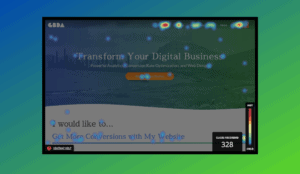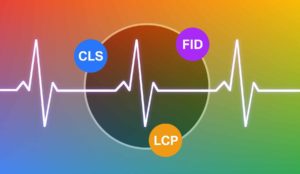Why Do You Have a Website?

Ah, the internet. What an amazing thing! Giver of voices to the masses and dispenser of free information. I remember when I was a kid, before the internet really became popular, (before even unplugging the phone to connect to AOL seemed to make so much sense,) that when I wanted to learn something, I had to either look it up in an encyclopedia or ask a friend. If I wanted to buy something, I had to find it in the store. It made a lot of sense at the time, but really I was severely limited by my research skills, who I knew, or where I could go. Over time, something magical happened. Asking a friend turned into asking Google. I no longer had one friend to ask; I had as many friends as Google gave a voice. That’s a lot of friends, and a whole bunch of voices.
It was interesting though, because now I had access to all of these voices, which was great, but they weren’t all saying the same thing. The questions were flying around in my head. Who do I trust? Whose voice was worth listening to? Soon the abundance of information started to look more like a complicated overload, and I had no idea what to think! I needed to figure out a way to sort through the voices and pick out the ones that resonated with me. Ones I trusted. Ones that made sense. Ones that made me feel good.
Of the millions of voices at Google’s disposal, you are the proud owner of one of them. You have valuable information to share, products to sell, or services to perform, but why should I, or anyone for that matter, trust you? How do you ensure that YOUR voice is one that becomes heard? One that makes sense? To figure this out, I want to take you down a path of self discovery. The first question I want you to think about is a simple one: Why do you have a website? Really. What is your goal? It may seem like a silly question, and I’ll tell you something, the answer may be even sillier: you have a website so your business can succeed.
I know what you’re thinking. “How useless!” I bet right about now I sound like one of those untrustworthy voices, but you know what though? I understand where you’re coming from, so please hear me out. Rooted deeply in the answer to this question is where it all begins, and this is where you can lay down your foundation and craft a strategy to set yourself up for a solid and prosperous future. Start small. Think big. Keep it simple. Your business can only stay in business if you do well enough to continue, so no matter what your core tenants are, you still very much need a well-designed operation in conjunction with that to ensure you can stick around for the long haul.
So now we’ll move to the next question: what does it take for you to succeed? If you’re in the business of selling things, you obviously need people to buy them. If you are in the business of doing things, you will undoubtedly need people to let you do it for them. Again, not rocket science. You can’t stay in business by educating. You can’t stay in business by giving things away. You need people to buy things through your site, or you need them to contact you so they can do so. This is where it gets tricky though…why do people choose to do that?
“I have a pretty website!” “I have been doing this for years!” “I am great at talking to people!” I don’t doubt it, I’m sure you have, and I bet you are. What is it about that though that sets you apart? After all, anyone can have, do, or be those things, and everyone you come across will always claim to be the best. (All those other internet voices!) You know the issue? You can’t convince anyone of that. Ain’t gonna happen. There just aren’t enough tools in your arsenal to force someone to believe something, no matter what you tell them. So is it hopeless? A fruitless endeavor? Unachievable? Fortunately, it’s not. You just might be looking in the wrong spot for the answer. The thing is, you don’t have the answer. Your customer does.
Let’s take a step back and reflect on something I said: “you can’t force someone to believe something.” That’s the source of the problem though, and the most important obstacle to overcome to gain trust. People need to believe what you want them to believe. THAT’S how you succeed. People need not only to think, but to b e l i e v e that you can solve their problems. Whether the problem is they have a crappy couch or their water heater burst and flooded the basement, YOU are the solution.
Now here’s where many people get it wrong, and where many businesses fail. Even though you physically do, you don’t really sell couches. You don’t really sell flood repair. You sell Comfort. You sell relief. Status. Peace of mind. You need to sell what they want, the solution, and not what you physically have. That may sound like a strange concept, but what it really means is that you need to think about your site through the user’s eyes. Stop thinking about it as a salesman, and think about it as a customer. To do this, you need to anticipate the questions and proactively answer them, guiding users to where they want to go in as simple a way as possible, in a way that they feel they are in control over, that makes sense. You create a flow, and they will create the belief. That’s what we call the funnel, and that’s the most important aspect of your website, because that ultimately is what will ensure you can keep the lights on.
The funnel is the main driver behind the website, and it creates a path for someone to follow that leads them to a goal. It shines a bright light on where someone needs to go, and doesn’t leave them as much leeway to wander around. Yes, having information available for people to look at is a good thing, but let’s be clear: your job is to keep them focused and to have them easily find what they need, or more importantly, to have them realize that YOU have what they need. Remember, your goal is to succeed, and unless they meet the goal (buy something/contact you), then you have not succeeded. Along the path, the customer is engaged and “chooses their own adventure,” (I used to love those books, by the way,) and at the end, there is a clear call to action, whether that is a “buy now,” “contact now,” or “donate now.” Since they brought themselves there on a clear path, they chose it. You didn’t sell it to them. They did.
Gone are the days of information overload, spaghetti on the wall, and trying to answer everyone’s little questions on your website. Wouldn’t you rather answer their little questions personally with a call or e-mail after gaining their trust? Today, it’s all about answering the RIGHT questions on your website, allowing someone to connect and go on a seemingly self-guided journey on their way to the discovery that you have exactly what they want. This may seem like a lot, but really it all starts with one simple first step: think like a buyer. What’s important to you, and what would make your experience the smoothest? In all likelihood, that’s exactly how a potential customer would think.
So that’s the secret! Build the right funnel so that your customers have a clear path to get from point A to Z in a simple way that proves that you are the one who can give them exactly what they want or need. The most direct way to build the best path for your customers is to think like one, and to abandon the idea that you need to win them over. They need to win themselves over, and your role is really about making that possible. So now that we’ve got the concepts down, as we move forward in this series, we’ll look to explore the steps you can take to actually turn that theory into action, and to let your voice be heard!

About Great Big Digital
Achieve your website goals with customized data, intuitive UX, and intentional design.


